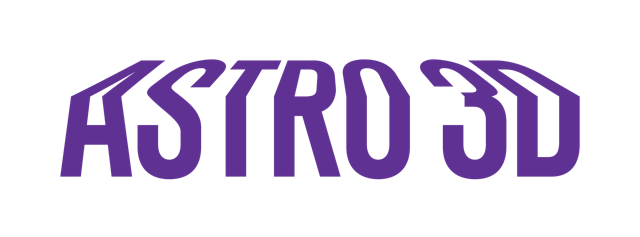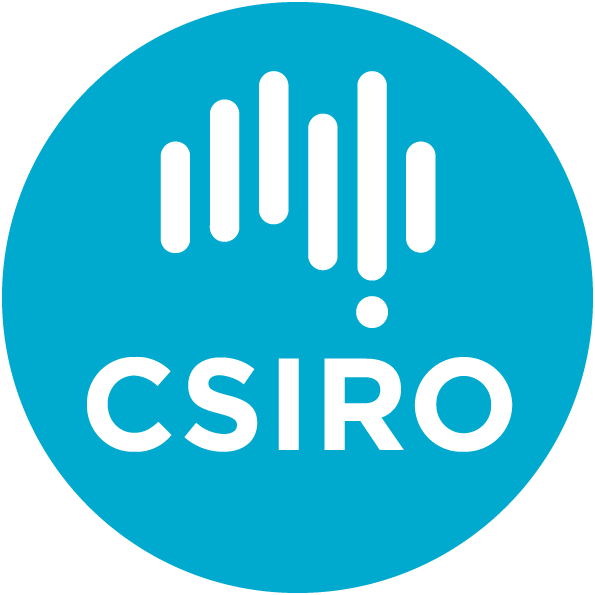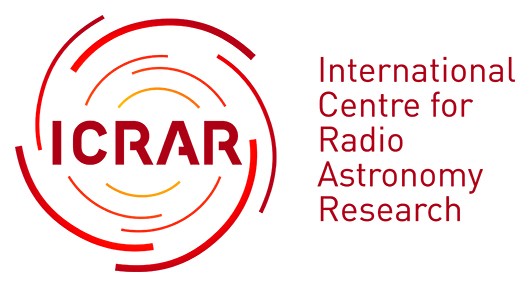February 2020
Editor: O. Ivy Wong
Foreword
Ivy Wong
Welcome to the February 2020 edition of the WALLABY newsletter. Happy New Year to all! Much has been happening with the pilot phase of ASKAP observations in the past 6 months. As such we will now resume 6-monthly newsletters so that the team will not have to wait 8 months for each set of official updates. This will be my last newsletter as the editor and I wish to thank you all for your support and contributions.
In this issue, we have an update on the latest pilot ASKAP observations and reports from several technical working groups. Bi-Qing also tells us more about WALLABY’s 5th early science publication on the LGG 351 galaxy group, the largest WALLABY group published thus far. We also have updates from Technical Working Groups 3, 4 and 5 from Bi-Qing on data validation, Tobias on source-finding with SoFIA and Kristine (Spekkens) on the WALLABY kinematic pipeline, respectively. Happy reading!
Message from the WALLABY PI
Lister Staveley-Smith
Happy New Year to WALLABY team members! You will see elsewhere in this edition that observations for two out of our three pilot fields were completed in December. Completion of the pilot survey is an important milestone for the project, as it enables us to finalise our pipeline and post-processing parameters, and will give us the best indication of the quality of data that we can expect from the full survey. We are working with the ASKAP team to process the pilot data as quickly as possible so that we can release it to team members to undertake their approved science projects (and propose new projects!). Preliminary reductions suggest that the data quality is good. Over the next few weeks, the management team will be drafting new and expanded policy documents. The purpose of these documents is to give further clarity to team members around issues relating to team membership, publication policy, conduct, and data rights and responsibilities. These documents are approved by the broader WALLABY executive at their monthly meetings. If you would like to contribute your thoughts on existing or future policies, please contact myself or members of the management or executive.
Message from the project manager
Tobias Westmeier
With WALLABY pilot survey observations officially under way, we are heading into a new phase of the project that will hopefully see the transition into full survey mode in the no-so-distant future. While the main purpose of the pilot survey is to test and demonstrate the technical readiness of the WALLABY project, our three pilot survey fields (Hydra, Norma and NGC 4636) were also chosen for their scientific merit as motivated by the research interests within our team.
The internal call for proposals for pilot survey science papers in August 2019 was met with great interest. The WALLABY management team received 23 unique proposal submissions covering a wide range of different science areas. Given that the pilot survey will only image about 0.5% of the full WALLABY sky, this is an astounding figure that emphasises once again the great scientific potential of the WALLABY project.
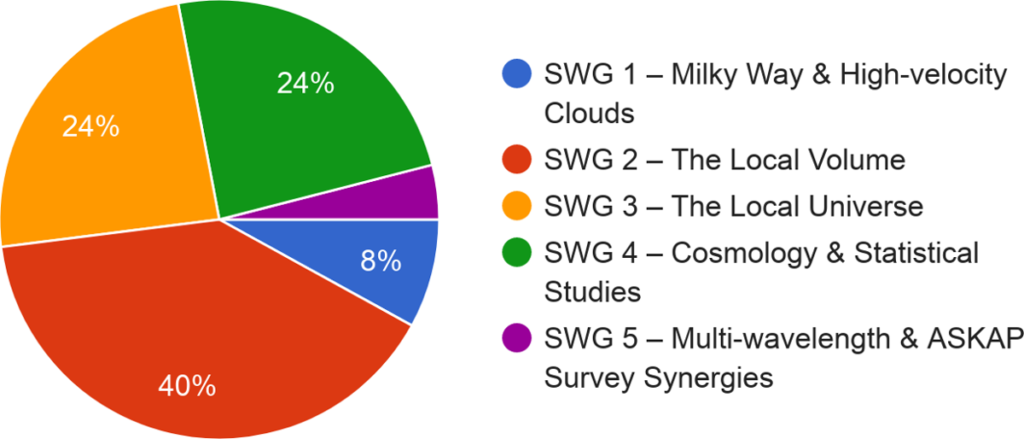
Not unexpectedly, many proposals have focused on the study of galaxy properties and their variation with environment. Nevertheless, as shown in Figure 1, projects have been proposed across all five science working groups and range from Galactic and Local Group science to large-scale statistical studies.
In the name of the entire management team I would like to thank all of our team members who have contributed to the pilot survey science proposals, and particularly the science working group leaders for their help with coordinating and reviewing the proposals. All proposals have now been updated and merged where necessary, and a summary of the final projects has been made available on our internal Redmine wiki.
It should be noted again at this point that the pilot survey science projects are open to all WALLABY members who would like to contribute, and requests for participation should be sent directly to the respective project PIs.
Lastly, we will be holding our next WALLABY Busy Week in Perth in early March 2020 to discuss the outcome of the pilot survey observations and assess if our data reduction and analysis tools are ready for the full survey. The topics to be discussed at the Busy Week will be closely aligned with our technical working groups 3–6 and include data processing & imaging, data validation & quality control, source finding & parameterisation, kinematics pipeline, visualisation and databases. More information is available from the official website
I look forward to seeing many of you in Perth in March.
Message from the project scientist
Karen Lee-Waddell
ASKAP is currently conducting Pilot Surveys, which are intended to guide the way towards full operations. During this phase, each Survey Science Project has been allocated 100 hrs of on-source observing time to test their survey strategy as well as produce new science results.
After careful consideration of the targets on the WALLABY Early Science field list, three fields were selected for the WALLABY Pilot Survey: the Hydra cluster, NGC 4636 group, and Norma cluster. For technical testing, the fields are located at different declination and each would be observed using two adjacent tiles. These fields also offers unique science opportunities, as recognized by the numerous science paper proposals received for the WALLABY Pilot Survey (see the Project Manager’s update for more details).
We now have all the ASKAP data for the Hydra cluster and NGC 4636 group. ASKAPsoft pipeline processing of the Hydra data is underway. The initial image cube from one epoch of observations is very high quality (see Figure 2); however, there are some imaging artefacts that could be alleviated with improved data flagging and continuum subtraction methods.
The ASKAP spectral line data processing working group has been working closely with the ASKAPsoft development team to find solutions for the issues at hand. Once the new adjustments are implemented into the pipeline, the Hydra and NGC 4636 data will be fully processed and released onto CASDA. At that time, the raw data products will be deleted to make room for observations of the Norma cluster.
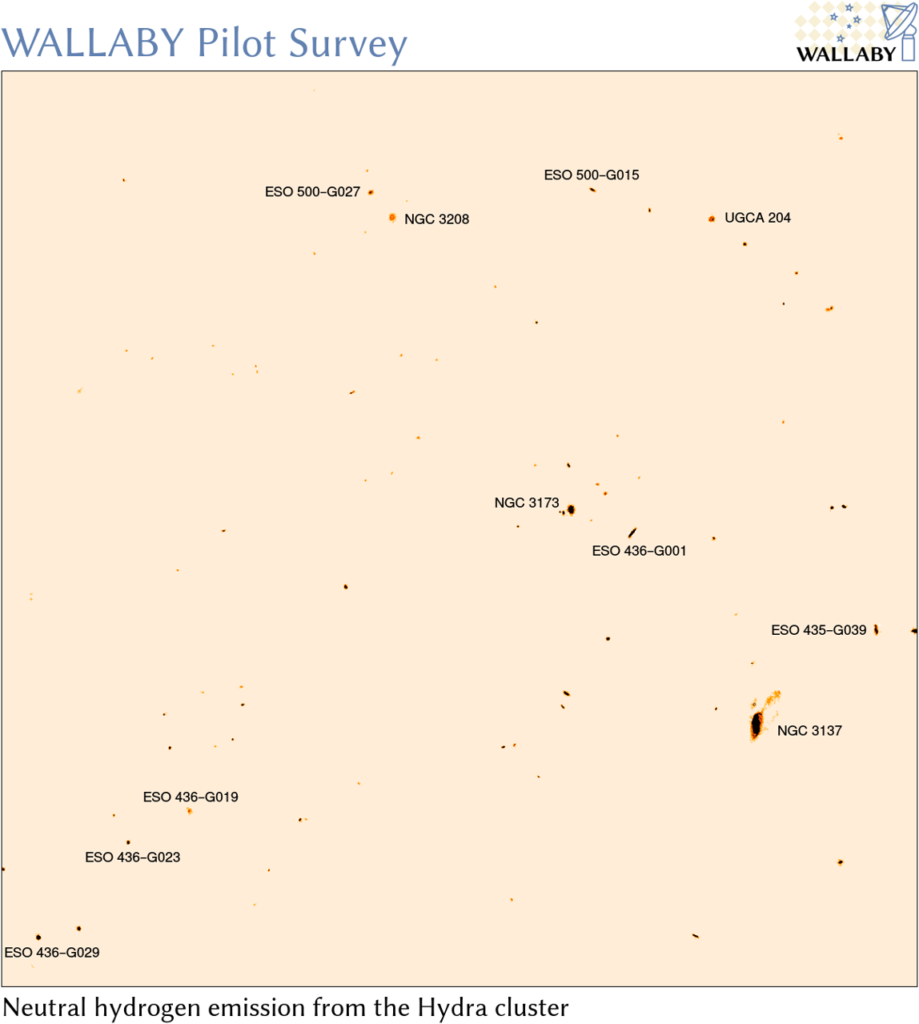
WALLABY Early Science Paper 5: ASKAP HI imaging of the Lyon Group of Galaxies 351
by Bi-Qing For
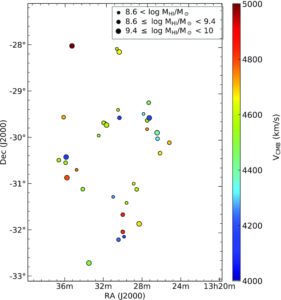
In this recently published paper (DOI: 10.1093/mnras/stz2501), we use ASKAP early science data of the M83 field to study the galaxy group LGG 351. LGG 351 resides behind the M83 group at a velocity range (cz) of ~3500 – 4800 km/s within the rich Hydra-Centaurus overdensity region. The mosaic image cube comprises of 23 individual beam cubes and has a synthesized beam of 45″ × 35″. We detect 40 sources with the discovery of a tidally interacting galaxy pair and two new HI sources that are not presented in previous optical catalogues (see Figure 3). 23 out of 40 sources have new redshifts derived from the new HI data. This study is the largest WALLABY sub-sample to-date. Figure 4 presents the example output from the SoFiA sourcefinder for ESO 444-G047. In conjunction with multi-wavelength data, we find that our galaxies follow the atomic gas fraction and baryonic Tully-Fisher scaling relations derived from the GALEX Arecibo SDSS Survey. In addition, majority of our galaxies fall within the star formation main sequence indicating inefficiency of gas removal processes in this loose galaxy group.

TWG 3 – update on data validation
by Bi-Qing For
During the early science phase, we have been testing various metrics for validating the final mosaicked data cube. In combined effort with the ACES team, we now have statistical files and plots that are generated by the ASKAPSOFT pipeline for evaluating the data quality. Implementation of statistical calculations within the pipeline is crucial as our initial test has shown that it is more efficient to write and to manipulate data cube while it is still in the computer memory. To consolidate the metrics and observational information for the science users, we have written a stand-alone python script to generate a HTML summary report. This script also creates additional plots for visualising the spectral line data quality. The report can be opened with web browser and will be available through CASDA along with the associated data release. An example of the report is given in Figure 5.
The next step forward would be implementing the script into the ASKAPSOFT pipeline. In the meantime, we release the latest version of the script via GitHub (https://github.com/askap-qc/validation). Suggestion and feedback are welcome.
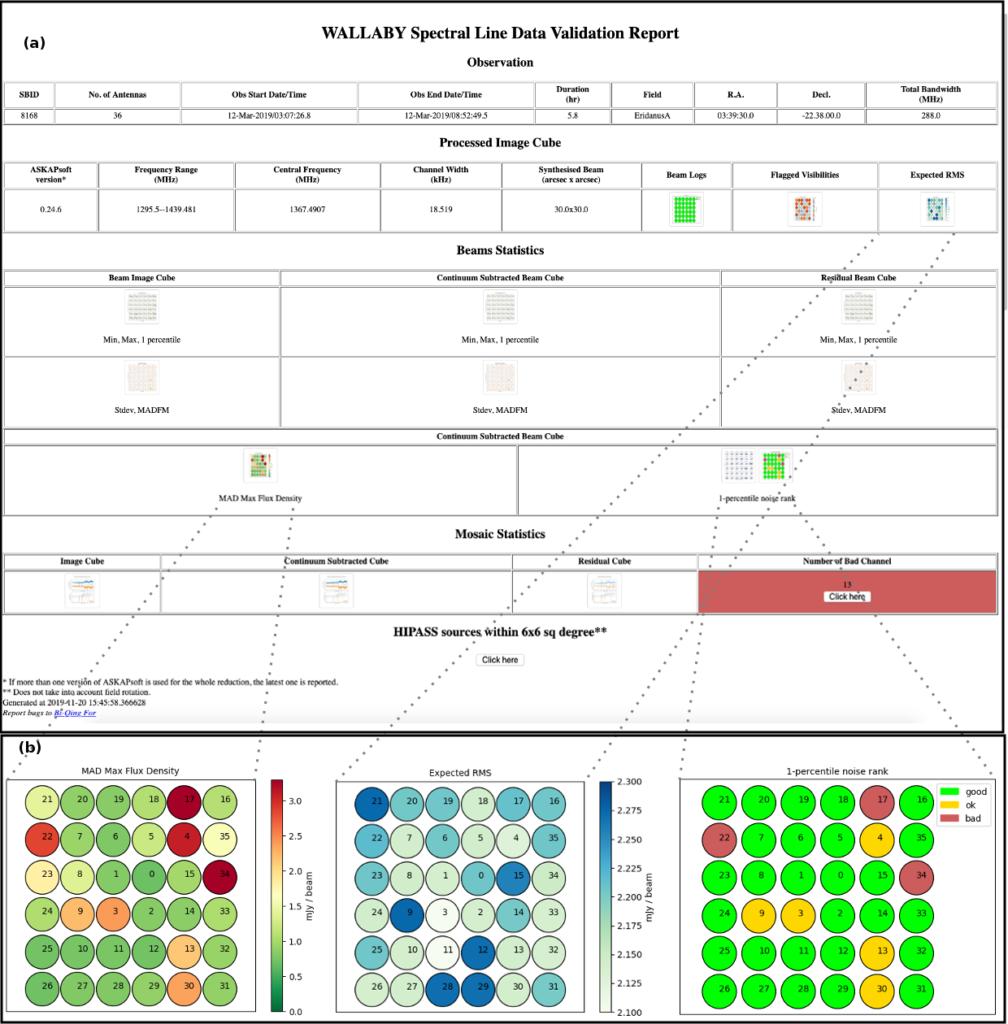
TWG 4 – Source Finding and Cataloguing
by Tobias Westmeier on behalf of TWG 4
Introduction
The year 2019 has been a tremendously successful one for TWG 4, as we are working towards getting the WALLABY source finding pipeline ready for the full survey. Here we report on our progress with the new C-based SoFiA 2 pipeline as well as our multi-threading and parallelisation efforts. We also present promising results and pictures from our successful source finding run on the Eridanus early science data.
SoFiA 2
In the previous newsletter we had introduced SoFiA 2, the faster and more memory-friendly reimplementation of SoFiA using C rather than Python. It includes the most powerful algorithms from SoFiA 1 such as noise normalisation, the S+C finder and reliability filtering, but currently lacks a graphical user interface. SoFiA 2 has now reached stable status, and the latest stable version, SoFiA 2.1, was released in November 2019. It is available for download from GitHub at https://github.com/SoFiA-Admin/SoFiA-2/releases
While some of the less commonly required functionality of SoFiA 1, such as the 2D–1D wavelet filter or the CNHI finder, has not yet been ported, we nevertheless recommend that users consider switching to SoFiA 2 at this point, as the new pipeline is much faster, more memory-efficient and significantly easier to install and use. Thorough testing and feedback from a large user base would also be critical at this stage to ensure that SoFiA 2 meets the needs and expectations of our users.
We would like to use this opportunity to thank all SoFiA users who have provided us with feedback and bug reports in the past. Such feedback is incredibly important for us to become aware of potential issues with the software and to ensure that critical problems can be fixed as quickly as possible.
Parallelisation
In addition to the transition from Python to C, there has been excellent progress on creating a parallel version of SoFiA 2 over the past few months. Two avenues are currently being pursued:
- We successfully applied for 9 weeks of ADACS software support time for the purpose of multi-threading the most time-critical algorithms in SoFiA 2. This work has progressed well and resulted in a significant speed-up of the source finding pipeline by about a factor of 4. An additional factor of almost 2.5 can be achieved through further optimisations such as parallel I/O and improved algorithms. Tests on a 100 GB data cube suggest that we are now capable of processing such a data volume in about 12 minutes, making automated source finding on full-sized WALLABY cubes perfectly feasible.
- In addition to multi-threading, we are also currently working on the automated partitioning of large data cubes for parallel processing on multiple computing nodes. This work is being carried out as part of WALLABY’s successful bid for technical support from the Australian SKA Regional Centre (AusSRC). The ultimate aim is to dissect a full-sized WALLABY cube into smaller, overlapping chunks that will fit into the limited memory available on each node, run the multi-threaded SoFiA 2 pipeline on all chunks in parallel, and lastly amalgamate the output from each node into a single, coherent source catalogue.
The multi-threading and parallelisation work will be completed soon, and at this stage we anticipate having a prototype of the parallel SoFiA 2 pipeline available in early 2020, just in time for the WALLABY pilot survey. The parallel source finding framework will enable us to run SoFiA 2 on a full-sized WALLABY data cube in a matter of minutes.
Early Science Data
SoFiA 2 successfully passed its first full-scale test after running the pipeline on the Eridanus early science data cube. For this purpose, we ran eight instances of SoFiA 2 in parallel on the cluster at ICRAR, processing almost 200 GB of data covering the full 30 deg² field of view and the redshift range of 500 < cz < 8500 km/s. Figure 6 presents the resulting moment-0 image from SoFiA 2, showing more than 50 genuine H Ⅰ detections across the entire region.
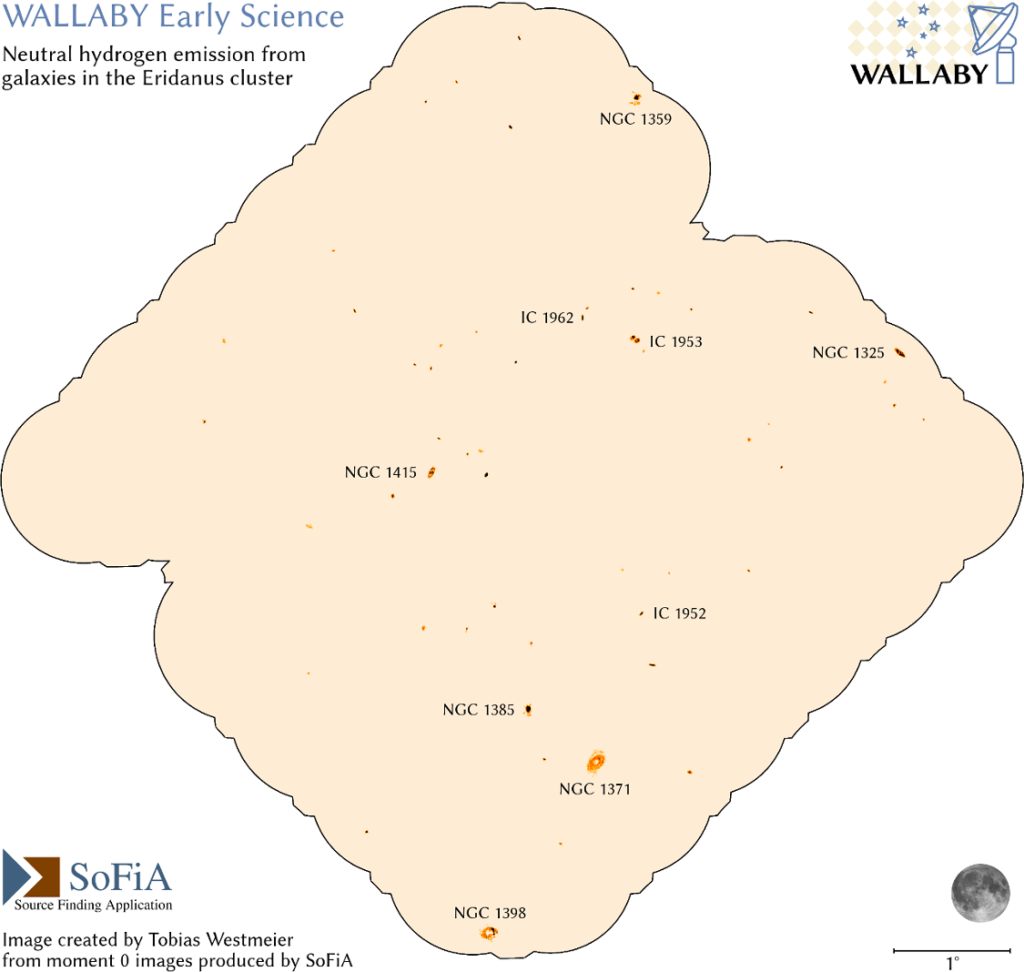
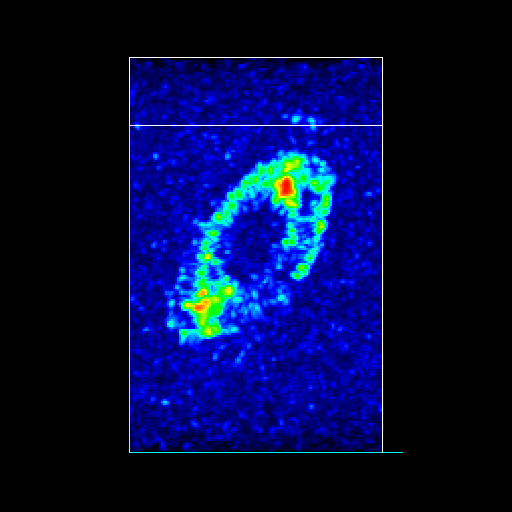
While the Eridanus data do not quite reach full sensitivity yet due to limited integration time and use of only 24 out of the 36 antennas of ASKAP, the results nevertheless provide an impressive first glimpse at what a full-scale WALLABY observation will look like.
In addition to global source catalogues and moment maps, SoFiA 2 also provides a range of useful data products for each individual detection, including a small sub-cube, a mask cube, an integrated spectrum as well as moment maps. Some of the data products delivered by SoFiA 2 for the most extended galaxy in the Eridanus field, NGC 1371, are shown below. Such value-added data (Figure 7a & 7b) will be made available to the entire WALLABY team for scientific analysis.
Join the team
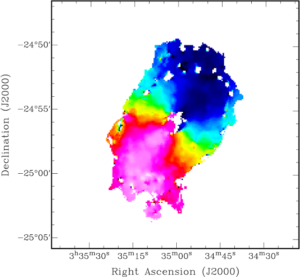
Lastly, the SoFiA team is open to new members who are eager to help with the development or testing of SoFiA. If you think you have a great idea on how to make SoFiA even better, or if you enjoy programming and would like to contribute to a popular and widely used software project, or if you are keen to help us with testing or popularising SoFiA, please don’t hesitate to join our team by getting in touch with me (tobias [dot] westmeier [at] icrar [dot] org). We also hold weekly half-hour telecons which provide a great opportunity for meeting the rest of the team and discussing new ideas.
TWG 5 – Building the WALLABY kinematics pipeline
by Kristine Spekkens
With the expectation that tens of thousands of Wallaby detections will be angularly resolved by a least a few beams, the primary goal of Technical Working Group 5 (TWG5) is to build a pipeline that will automatically model the kinematics of those galaxies to constrain their structure and geometry. Important progress on this front has been made in recent years through the development of prototype 3D and 2D fitting algorithms (Kamphuis et al 2015, MNRAS 452 3139; Oh et al 2018, MNRAS 473 3256). Significant ongoing efforts to generate suites of simulated HI datacubes from synthetic and real galaxies, to test existing codes, and to develop new algorithms are underway by various TWG5 members. The team is therefore well-positioned to deliver a working pipeline in time for the survey’s execution.
The goals for TWG5 over the next few months include modelling all resolved Early Science and Pilot Survey detections with existing codes in order to compare their performance as well as to enable science by the broader Wallaby team; expect details on how to access model outputs to use for your own science in the coming months. Work on the pipeline proper has also begun and is the responsibility of Dr Nathan Deg at Queen’s University, hired through the Canadian CIRADA intiative. The pipeline will build on existing 3D codes and will be optimized for a high-performance computing environment. Initial software development will focus on reliably modelling axisymmetric disks resolved by as few as 4-5 beams across the major axis and producing meaningful model parameters and uncertainties for the Wallaby catalog. Existing code + data modelling and pipeline development will be tackled during the TWG5 sessions of the Wallaby busy week from 2 – 6 March 2020. Stay tuned for developments on both fronts!
Up-coming Meetings
2020 February 17 – 21 : Cosmic Flows, Cape Town, South Africa
2020 February 17 – 21: 2nd Australia-ESO joint conference – the build-up of galaxies through multiple tracers and facilities (ICRAR/UWA, Australia)
2020 March 2 – 6: WALLABY busy week (ICRAR/UWA)
2020 May 11 – 15: 13th PHISCC workshop + associated meetings in Cagliari, Italy
2020 June 23 – 25: Multiphase Gas in Galaxy Groups Workshop, Charlottesville, Virginia, USA
WALLABY Publications
Aug 2019 — Jan 2020 (according to ADS):
For, B.-Q., Staveley-Smith, L., Westmeier, T., Whiting, M., Oh, S.-H., Koribalski, B., Wang, J., Wong, O.I. et al 2019 WALLABY Early Science – V. ASKAP HI imaging of the Lyon Group of Galaxies 351 Monthly Notices of the Royal Astronomical Society, 489, 5723
Kleiner, D., Koribalski, B.S., Serra, P., Whiting, M.T., Westmeier, T., Wong, O.I., Kamphuis, P., Popping, A. et al 2019 WALLABY Early Science – IV. ASKAP HI imaging of the nearby galaxy IC 5201 Monthly Notices of the Royal Astronomical Society, 488, 5352
Lee-Waddell, K., Koribalski, B.S., Westmeier, T., Elagali, A., For, B.-Q., Kleiner, D., Madrid, J.P., Popping, A. et al 2019 WALLABY Early Science – II. The NGC 7232 galaxy group Monthly Notices of the Royal Astronomical Society, 487, 5248
